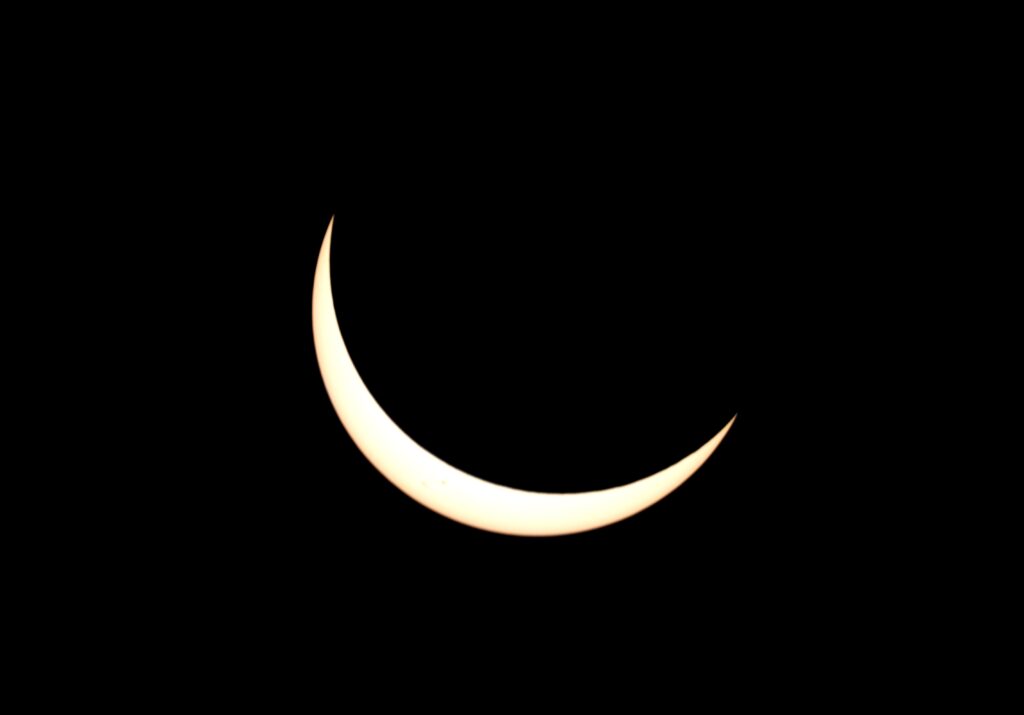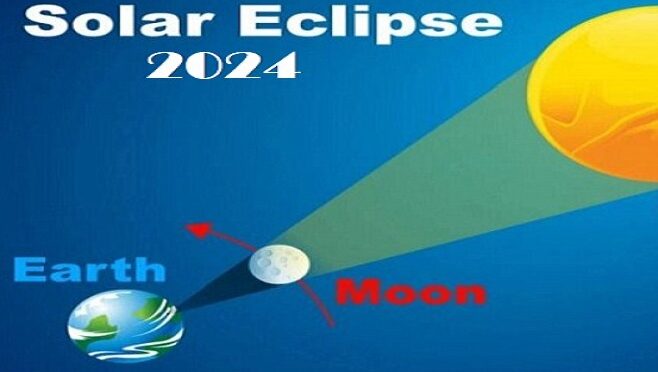Countdown to the beginning of the Partial Solar Eclipse as viewed from Tucson (Monday April 8, 2024, 10 am-12:36 pm, with maximum at 11:19 am):
If you can’t make it to Totality, seek out an event in your area to view the Partial Eclipse. The entire U.S. will at least see a partial eclipse during the event. IMPORTANT: You MUST WEAR APPROVED SOLAR GLASSES to view any part of the partial eclipse or observe using a safe solar filter on a telescope or a telescope that is made specifically to observe the Sun. Be wary of knock-off glasses. Approved Solar glasses should be marked with ISO 12312-2 or 12312-2:2015. Do not use if they have scratches or holes. Purchase only from reputable sources.
In TUCSON, we will see about an 75% Eclipse and will look about like the below image at maximum.

Don’t miss the April 8, 2024 Total Solar Eclipse! If you are able to make it to the centerline to see Totality, it is certainly worth it. The centerline is a very narrow path and the only place you can see Totality. The closer you are to the middle, the longer Totality will last. The Eclipse enters the U.S. in Texas, moves through the midwest along a NE path toward the NE U.S., and exits the U.S. in Maine. Use the links below to see the Path of Totality. The Total Eclipse will look similar to the below image.

If you are in the Tucson, Arizona area during the Eclipse our club will have Telescopes set up to safely view the sun during the event at Flandrau Planetarium (UofA Mall).
Flandrau Science Center Eclipse Viewing
Tucson Amateur Astronomy Association Events Calendar
Here are some resources and links to help you determine where and how best to observe the Eclipse.
How to Photograph the 2024 Solar Eclipse – by Mike Shaw, presented to the Minnesota Astronomical Society, Jan. 2024. By permission of the MAS and Mike Shaw (www.mikeshawphotography.com).











